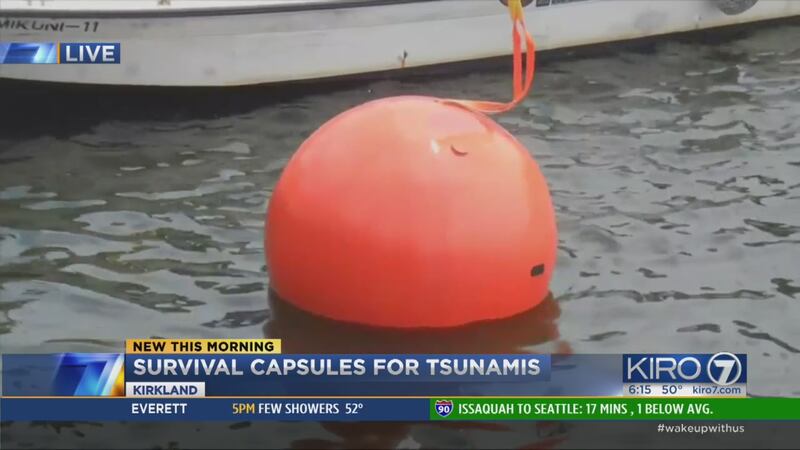It’s been six years since a local engineer had his ah-ha moment while on vacation on the Oregon Coast, wondering why coastal communities don’t have better tsunami evacuation plans.
But now the Survival Capsule he has engineered, tested, and created is ready and could give people an alternative to running from tsunami-generated waves.
Mukilteo engineer Julian Sharpe’s capsules tether to the ground and rise and fall with the water. They are designed to handle large impacts, fire, and other tsunami-related damage.
The Survival Capsules, as they’re now known, have been well-received in Japan and are on the verge of hitting the U.S. market.
“We hope to start selling officially in Japan in the first half of next year,” Sharpe said. “As far as the domestic market is concerned, we have decided to launch the two-person capsule next month officially.”
Sharpe says that first U.S. Survival Capsule will be installed on the Long Beach Peninsula. He exhales deeply when asked about how long it took to get to this point, saying he’s glad he has a “day job,” which is his aerospace company, Idea. But he knows he’s breaking new ground.
“We’re developing a product, we’re creating the market, and we’re also changing people’s mindset … that is, if they don’t have a horizontal and vertical evacuation, we’re giving them this third option.”
But this third option is likely out of many people’s price range, including those who need the capsule the most. They are still made by hand. The two-person models cost between $13,000 and $15,000.
Sharpe says they can be mass-produced using a robotic assembly line if there is the demand. There are three fabrication facilities already in Japan. Mass-production will bring down the costs, by how much Sharpe isn’t sure. What he is sure of is that he wants everyone who wants one to be able to get one.
That’s why he’s now exploring financing or leasing options so he can get them into economically-challenged communities along the coast.
“We have every intention of looking at ways of bringing the price down, but also looking at ways of financing,” he said. “So you have, small monthly payments, almost like an insurance.”
Sharpe says these capsules have one advantage over evacuation platforms.
“It’s not anywhere near as expensive as building vertical evacuation tower facilities on the ocean, which are fixed solutions,” he explained. “And let’s face it, fixed solutions can be overrun [with water].”
We’ll see how the capsule is received on the Long Beach Peninsula. Most tsunami maps show the entire peninsula would be washed over in a significant event, with the exception of the south end near North Head and Cape Disappointment.
Trending from KIRO 7 News
- Tsunami balls almost ready and will save you from violent death
- Hillary Clinton FBI investigation: 5 things to know
- PHOTOS: Four hurt in possible DUI crash in Bremerton
- Man dressed as Freddy Krueger shoots 5 people at Halloween party
- African cat loose in Gig Harbor found safe
Cox Media Group








